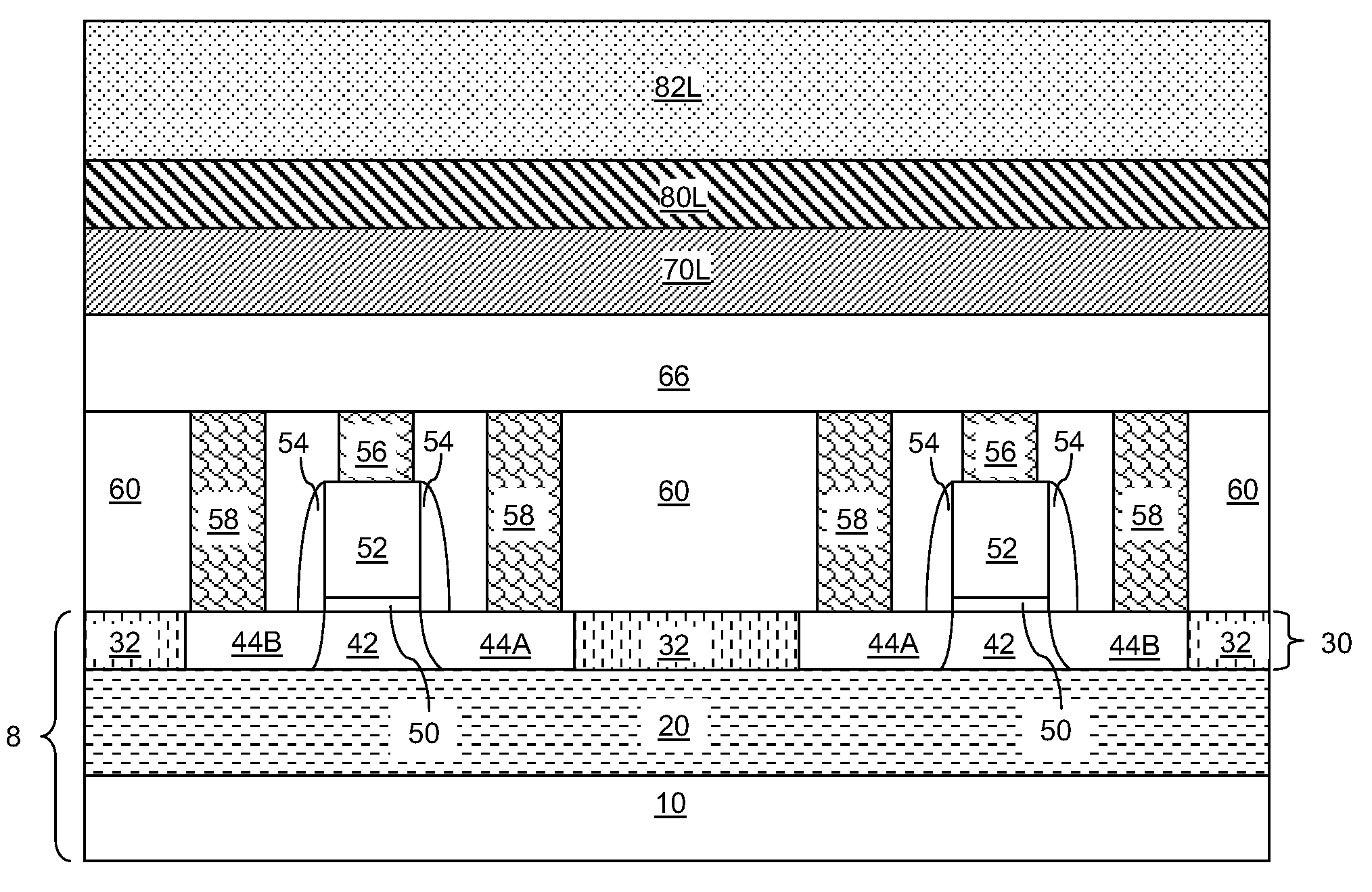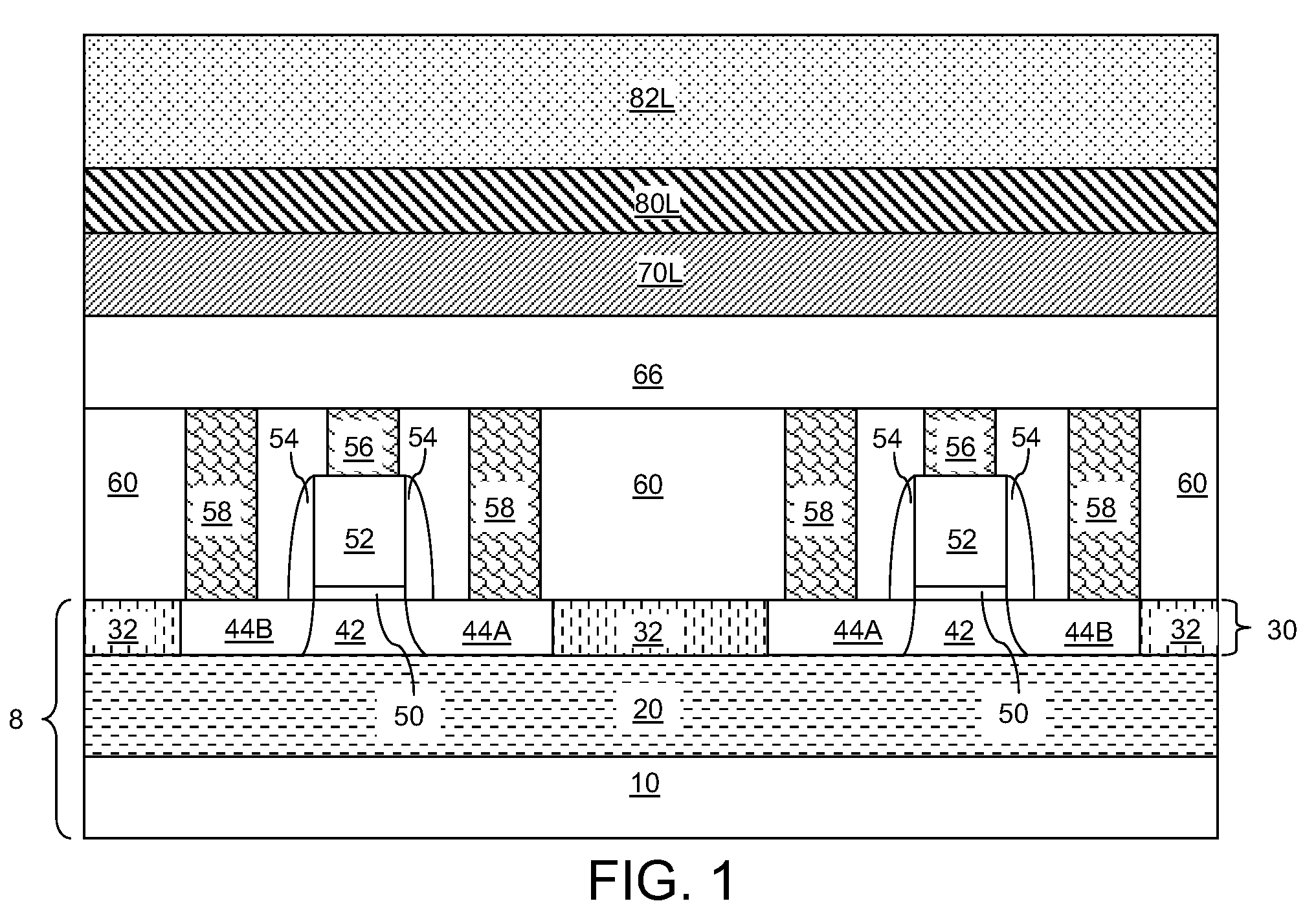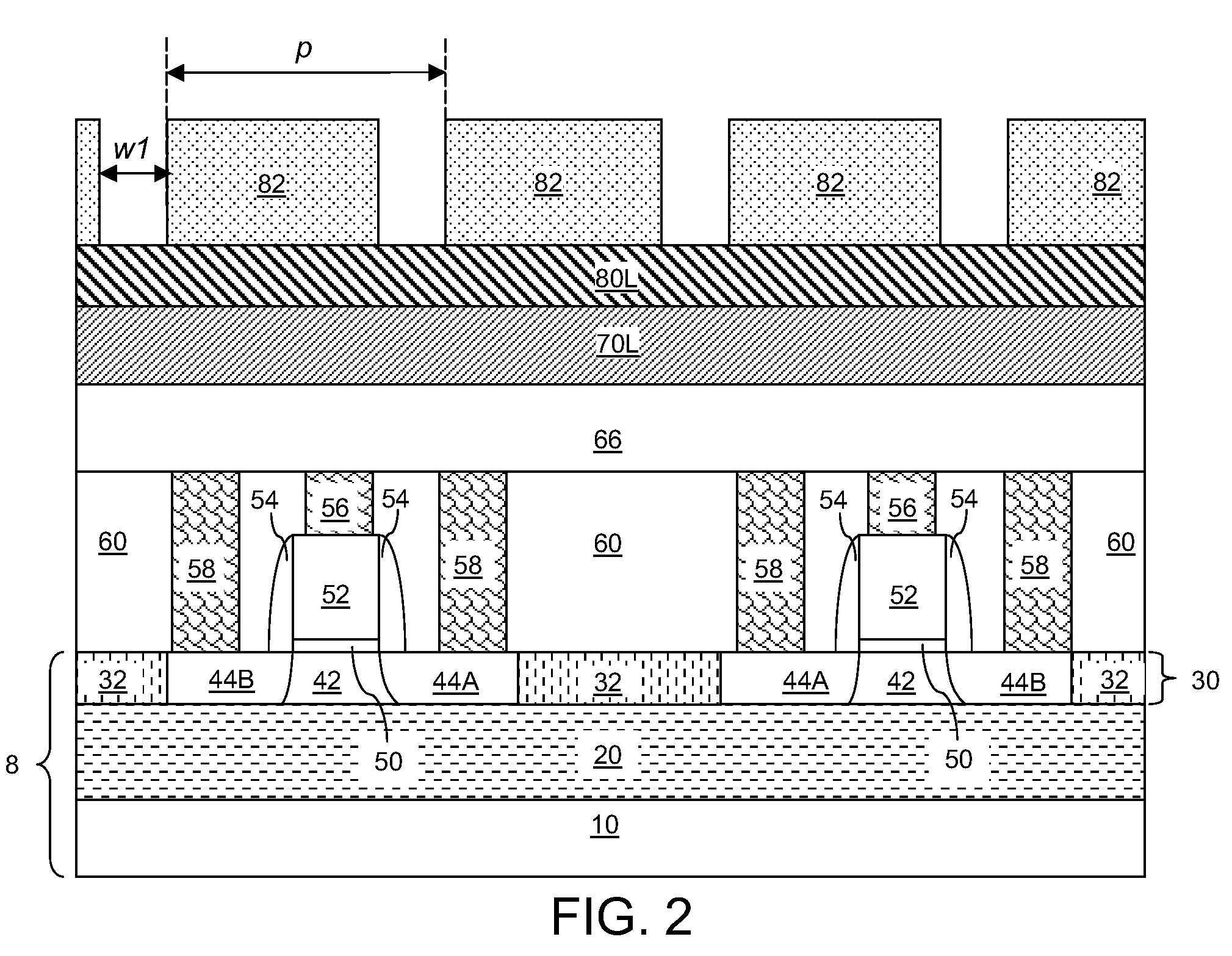Multi-exposure lithography employing a single Anti-reflective coating layer
a technology of anti-reflective coating and multi-exposure lithography, which is applied in the direction of photomechanical treatment originals, instruments, photomechanical equipment, etc., can solve the problems of difficult to obtain light sources that provide reduced wavelengths in the deep ultraviolet (duv) or extreme ultraviolet (euv) range, and the inability to obtain adequate light sources to enable printing of dimensions less than 50 nm,
- Summary
- Abstract
- Description
- Claims
- Application Information
AI Technical Summary
Problems solved by technology
Method used
Image
Examples
Embodiment Construction
[0032]As stated above, the present invention relates to methods for multi-exposure lithography employing a single anti-reflective coating (ARC) layer and structures for effecting the same, which are now described in detail with accompanying figures. As used herein, when introducing elements of the present invention or the preferred embodiments thereof, the articles “a”, “an”, “the” and “said” are intended to mean that there are one or more of the elements. Throughout the drawings, the same reference numerals or letters are used to designate like or equivalent elements. Detailed descriptions of known functions and constructions unnecessarily obscuring the subject matter of the present invention have been omitted for clarity. The drawings are not necessarily drawn to scale.
[0033]Referring to FIG. 1, a first exemplary lithographic structure according to a first embodiment of the present invention comprises a semiconductor structure including a semiconductor substrate 8, semiconductor d...
PUM
| Property | Measurement | Unit |
|---|---|---|
| Structure | aaaaa | aaaaa |
| Size | aaaaa | aaaaa |
| Adhesion strength | aaaaa | aaaaa |
Abstract
Description
Claims
Application Information
 Login to View More
Login to View More - R&D
- Intellectual Property
- Life Sciences
- Materials
- Tech Scout
- Unparalleled Data Quality
- Higher Quality Content
- 60% Fewer Hallucinations
Browse by: Latest US Patents, China's latest patents, Technical Efficacy Thesaurus, Application Domain, Technology Topic, Popular Technical Reports.
© 2025 PatSnap. All rights reserved.Legal|Privacy policy|Modern Slavery Act Transparency Statement|Sitemap|About US| Contact US: help@patsnap.com



